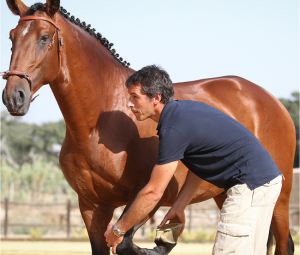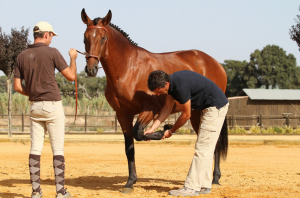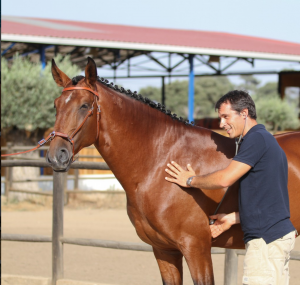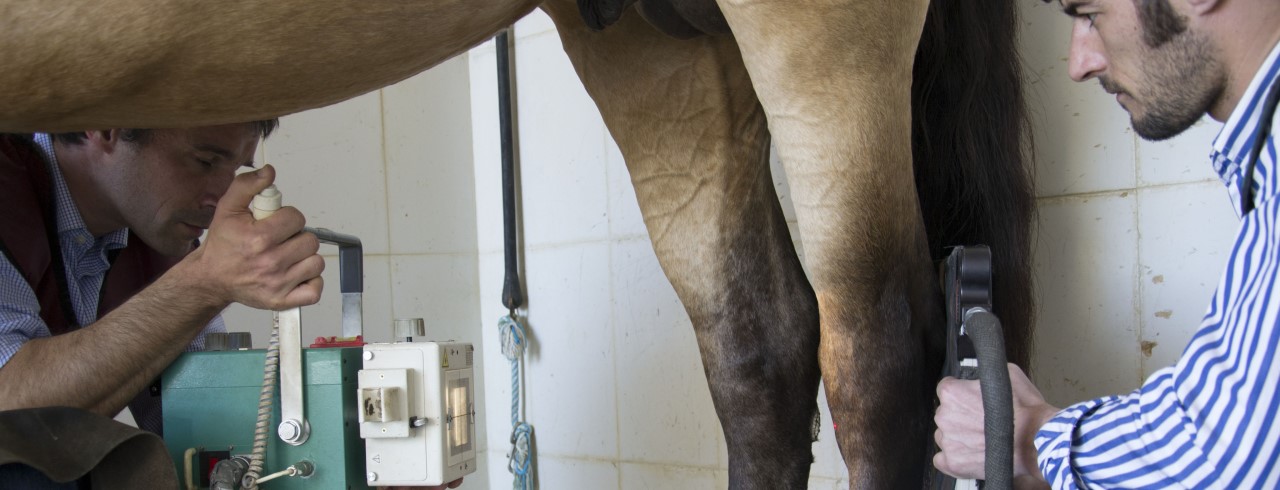Understand the Equine Pre Purchase Examination
The 5 stage vetting examination consists of 5 stages detailed below set by the Royal College of Veterinary Surgeons and the British Veterinary Association where the horse is examined both at rest and at work and the examination usually lasts for between 2 and 3 hours.
A basic or insurance vetting varies but generally consists of examination along the lines of stages 1 and 2 only.
Stage 1 – Preliminary Stable Examination
The first stage of the vetting is a preliminary examination with the horse stabled and any abnormal behaviour, signs of unsuitable temperament, etc will be noted. The vet will observe the general condition of the horse before moving onto examining the horse examining the heart, lungs and eyes.
The vet then examines the horse outside whilst stood on a level surface to allowing to ensure that the horse’s weight is distributed evenly and that it stands straight. Next they examine the horse all over to check the eyes, nostrils, lymph glands, muscular development, spine and limbs and also to check for wounds, swellings, growths, scars, heat, etc.
Once the horse has been checked thoroughly the vet views the horse at walk on a firm, flat surface to check that the horse shows regularity, suppleness and shows no sign of pain when moving.
Stage 2 – In Hand Examination
During Stage 2 the vet has the horse is trotted up on a flat, hard surface viewing the horse from behind, in front and from the side. The vet is looking for regular, straight movement without restriction and any indication of lameness or pain.
They also view the horse when turned and moved backwards to further assess the movement of the limbs. The vet will also carry out a flexion test – where each limb is lifted and held for a period and the vet views whether there is any abnormality in movement resulting from this. The flexion test can be useful in assessing seriousness of problems already identified and can expose lameness problems not otherwise found. However, flexion tests can cause lameness if applied too vigorously and so any doubt over the results of this part of the test should be discussed fully with the vet once vetting is completed.

Stage 3 – Strenuous Exercise
Here the vet watches the horse carrying out strenuous exercise in order to note the horse’s respiration and heart rate. If the horse is unbroken then exercise will be carried out on the lunge, otherwise the horse will normally be ridden. The horse is required to walk, trot and canter with the vet listening for abnormal sounds and at the end of the exercise the vet will examine the heart and lungs.
Stage 4 – Rest Period
After completing Stage 3 the horse will be rested for up to 30 minutes when the heart and lungs will be examined again and blood tests taken.

Stage 5 – Trotting Up and Foot Examination
The horse will be trotted up again in order to note that it continues to move soundly after completing stage 3.
During this stages we film the dynamic examination; also any important issues that may be relevant are pictured. In the end all this information is sent to the buyer together with the report.
A standard exam will include 20 projections from front naviculars, fetlocks (front and hind), tarsus and stifles. If required more images can be taken according to the buyers instructions.
Images will be sent with the report both in JPEG and DICOM format for better visualisation.

The Price the pre-purchase exam including 20 x-ray images will be from 500€ plus displacement.
Extra X-ray images will cost 30€/image.
Ultrasound, endoscopy, blood tests, can be provided if requested.
THIS INFORMATION HAS BEEN PROVIDED BY CRESPOVET – THE PRICES GIVEN ARE THAT OF THIS PRACTICE THEY MAY VARY WITH OTHER VETS
Check out our Lusitanos for sale



